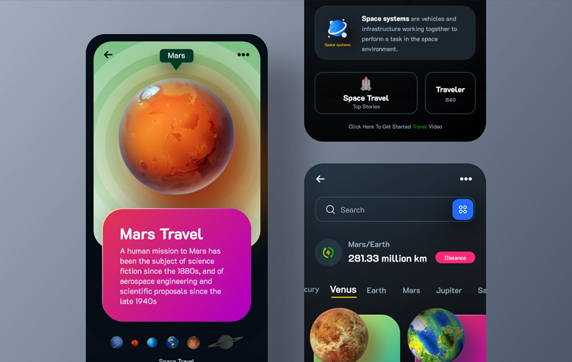What are the basic elements of graphic design?

Graphic design involves using images, texts, shapes, colours, etc., to drive the audience’s attention to communicate the brand’s message. Designers use various design elements to express something unique in websites, banners, posters, etc. This blog will discuss the basic graphic design elements to help you understand how to use them for your project.
7 basic elements of graphic design
The following are seven basic graphic design elements that every designer uses when creating designs for your project. Let’s discuss them further.
Line
Lines help define shape, organise information, convey movements and emotions, etc. Graphic designers have plenty of options when selecting types of lines for their projects. For instance, it could be vertical, horizontal, straight, carved, solid, broken, etc. The invisible lines in the grids of print designs add structure and direction to your project. On the other hand, visible lines help communicate various messages. Since every line can help convey so many messages, much thought goes into selecting the most appropriate ones based on individual project needs.
Shape
Shapes are forms or figures enclosed in a border or outline. When designing for the project, graphic designers understand two concepts of shapes – geometric and organic.
Geometric shapes can be two or three-dimensional. Designers connect points with a straight or curved line to create these shapes. Some examples are triangles, squares, rectangles, spheres, circles, etc.
Organic shapes, on the other hand, are less uniform. These shapes can be symmetrical or asymmetrical. Some examples are natural shapes, such as leaves, crystals, etc.
Viewers often connect different emotions with different shapes. Therefore, designers carefully consider various aspects to select appropriate shapes for their projects.
Colour
Colours play a critical role in getting emotional responses from your audience. Graphic designers effectively use Colour theory and colour wheel when selecting colour/s for specific projects.
The following colours are grouped into specific categories in graphic design.
- Primary Colours – These include red, yellow, and blue. They are the pure pigment colours and source of all other colours. Designers combine them to generate various colour shades.
- Secondary Colours – These include violet, green and orange. These are created as a result of mixing two primary colours. For instance, mixing red and yellow helps get orange, blue and red helps get purple, and green is produced by mixing yellow and blue.
- Tertiary Colours – These include red-orange, yellow-orange, blue-green, yellow-green, red-violet, and blue-violet. These colours are produced by mixing one primary colour and a secondary colour.
Designers consider two or more colours on various positions on the colour wheel to create colour harmonies. Besides, they also select various tints and shades of colour to represent different emotions. For instance, pastel shades can have a calming effect, while bright shades are associated with fun. Therefore, based on the project goals, designers put a lot of thought into selecting appropriate shades of colour to deliver your brand’s message.
Texture
It is the visual feel of a surface, such as rough, soft, glossy, smooth, etc. Graphic designers use illusions to create visual texture to provide your viewers with an idea of how the object would feel on their touch.
Designers experiment a lot with texture when designing various aspects of your project. For instance, you can experiment with organic texture, abstract patterns, etc.
Type
When selecting typography for your project, it is critical to use an appropriate one. The font type you select for your project can affect the overall mood of the design. In addition, designers also put much thought into determining the weight of the letters. For instance, usually thick letters are used to deliver important messages. On the other hand, thin letters are considered elegant and modern.
Space
Space is crucial to balance heavier visual elements, bring focus on images and texts, etc. Without enough space, your design can appear messy and not help create a positive brand impression. Designers often surround visual elements with space to highlight their importance.
Positive space in a design is the visual elements, while negative space refers to everything else, including the background. Therefore, designers put a lot of effort into maintaining a balance between positive and negative space.
Image
Graphic designers might choose to use photographs or illustrations in their designs. The purpose is to make the designs visually appealing to drive the audience’s attention. Images play a critical role in the design, as they help provide context and create the overall mood. Therefore, designers must select the right image to deliver the right brand message.
Therefore, graphic designers consider all these basic elements when creating designs for various branding and marketing aspects. Cloudistudio offers businesses graphic designing services. You can check the work of our graphic designers and select the right professional according to your project needs.